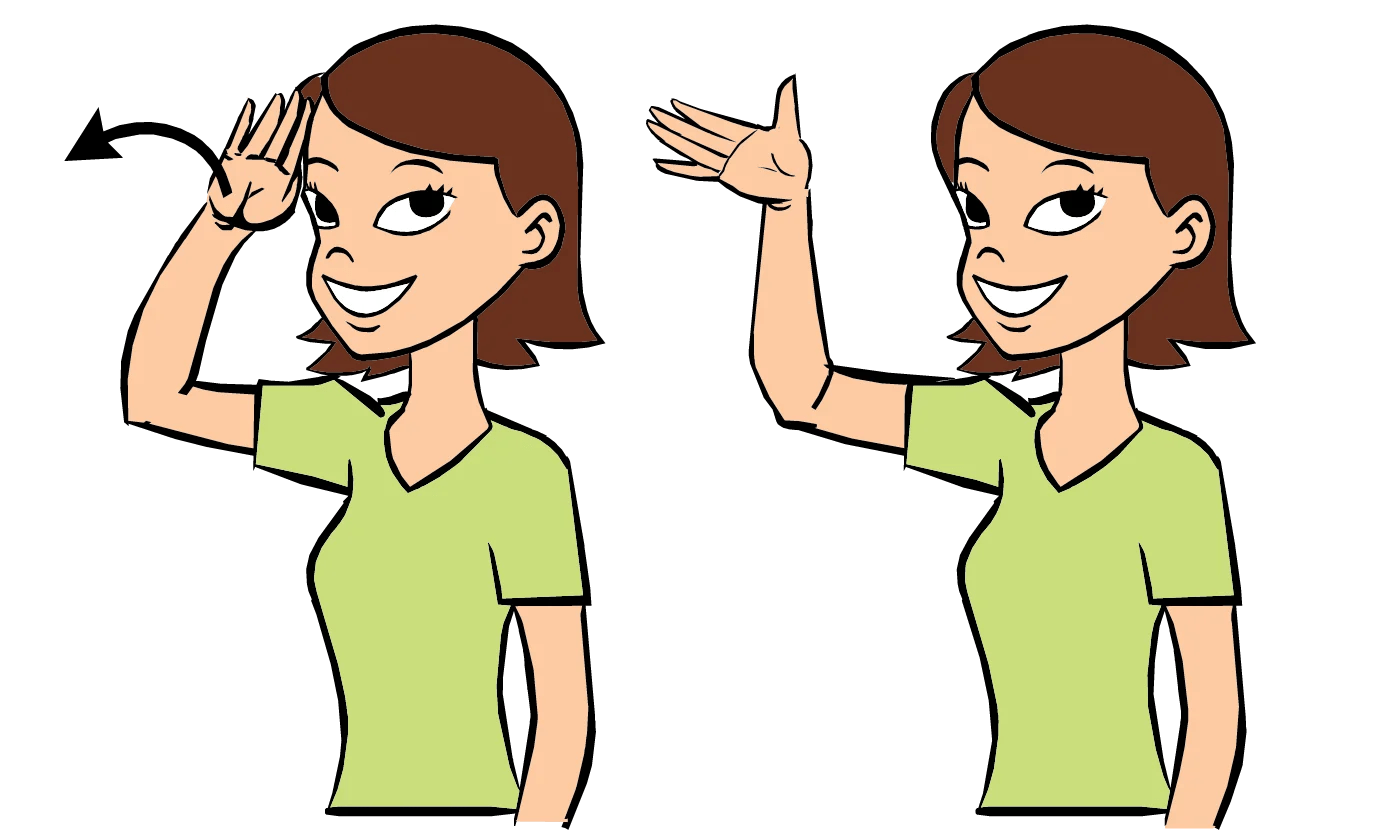In a world that thrives on communication, understanding how to express simple greetings can make a significant difference. One of the most fundamental yet powerful gestures in sign language is saying "hi." This simple sign opens up a world of interaction, allowing individuals to connect with others who may be deaf or hard of hearing. By learning how to say "hi in sign language," you not only broaden your communication skills but also show respect and inclusivity towards the deaf community.
Sign language is a beautiful and expressive form of communication, rich in culture and history. While many people may rely on spoken words, sign language offers a unique and visual way to convey messages. Whether you are learning sign language for personal reasons or professional ones, knowing how to greet someone is a vital first step. By mastering the sign for "hi," you can create a welcoming atmosphere and potentially form deeper connections with those around you.
In this article, we will explore the various aspects of saying "hi in sign language," including its significance, the correct way to perform the sign, and how it fits into broader communication practices. We will also answer common questions about sign language and provide tips for enhancing your learning experience. Get ready to dive into the fascinating world of sign language and discover the powerful impact of simple greetings!
What Does "Hi" Mean in Sign Language?
The sign for "hi" in sign language is a friendly and welcoming gesture that functions similarly to its spoken counterpart. It is often the first sign that individuals learn when starting their journey into sign language, as it serves as a universal greeting. Understanding the meaning behind this simple sign helps to establish a foundation for further communication.
How Do You Sign "Hi"?
Signing "hi" is straightforward and easy to learn. Here’s how to do it:
- Start by raising your dominant hand in a "B" handshape.
- With your palm facing outward, wave your hand slightly from side to side.
This gesture conveys a friendly "hi" to the person you are addressing. It's important to practice this sign to make it feel natural and fluid.
Where Did Sign Language Originate?
Sign language has a rich history that dates back centuries. The origins of sign language can be traced to various communities around the world, each developing its own unique system of communication. The first formal recognition of a sign language occurred in the early 19th century with the establishment of the first deaf school in Paris. Since then, sign language has evolved significantly, and many different signs have emerged, including the one for "hi."
Why Is Learning "Hi in Sign Language" Important?
Learning how to say "hi in sign language" is crucial for several reasons:
- **Inclusivity**: By learning this sign, you show respect and willingness to engage with the deaf community.
- **Connection**: A simple greeting can break barriers and foster relationships.
- **Awareness**: Learning sign language raises awareness about the challenges faced by the deaf and hard of hearing.
- **Cultural Appreciation**: Understanding sign language allows you to appreciate the richness of deaf culture.
Who Can Benefit from Learning Sign Language?
Sign language is not only beneficial for those working directly with the deaf community but also for anyone interested in enhancing their communication skills. Here are some groups of people who can greatly benefit from learning sign language:
- Educators working with deaf or hard-of-hearing students.
- Healthcare professionals interacting with patients who use sign language.
- Friends or family members of individuals with hearing impairments.
- Anyone interested in learning a new language and culture.
What Are Some Common Misconceptions About Sign Language?
Despite the growing awareness of sign language, several misconceptions still exist:
- **Sign language is universal**: In reality, different countries have their own sign languages.
- **Sign language is just gesturing**: It's a fully developed language with its own grammar and syntax.
- **Only deaf people use sign language**: Hearing individuals also learn and use sign language.
How Can You Practice Saying "Hi in Sign Language"?
Practicing the sign for "hi" can be done in various ways:
- **Mirror Practice**: Use a mirror to watch your hand movements.
- **Video Resources**: Watch online tutorials or videos demonstrating the sign.
- **Practice with Friends**: Engage with others who are learning sign language to reinforce your skills.
Where Can You Learn More About Sign Language?
There are numerous resources available for those interested in learning sign language:
- **Online Courses**: Websites like Udemy and Coursera offer sign language classes.
- **Local Community Colleges**: Many offer sign language courses for beginners.
- **Deaf Organizations**: Connect with local deaf organizations for workshops and events.
What Are the Next Steps After Learning "Hi in Sign Language"?
Once you’ve mastered how to say "hi in sign language," consider expanding your knowledge by learning additional signs and phrases. This will help you engage in more meaningful conversations. Practice regularly and immerse yourself in deaf culture to enhance your understanding and appreciation of sign language.
In conclusion, learning how to say "hi in sign language" is a small yet impactful step towards fostering inclusivity and connection in our diverse world. By embracing this form of communication, you contribute to a more understanding society where everyone has the opportunity to connect and communicate effectively.
You Might Also Like
Lainey Wilson: The Rising Star Out Of OklahomaUnderstanding The Fascinating World Of Buckle Bunnies
Discover The Cuddly Charm Of Jack The Black Cat Squishmallow
The Mystical Journey Of Life Path 11
Discovering The Best Pho Near Me Open Now
Article Recommendations
- Lee Soohyuk
- Mikayla Campinos Leaks
- Is Sophie Rain Spiderman Video Real
- Dan Spilo
- C J Stroud Girlfriend
- Tom Kaulitz When He Was Younger
- How Did Ariana Rye Die
- Abby And Brittany Hensel Still Alive
- Cleo Rose Elliott
- Griselda Guadalupe Guzman Lopez


